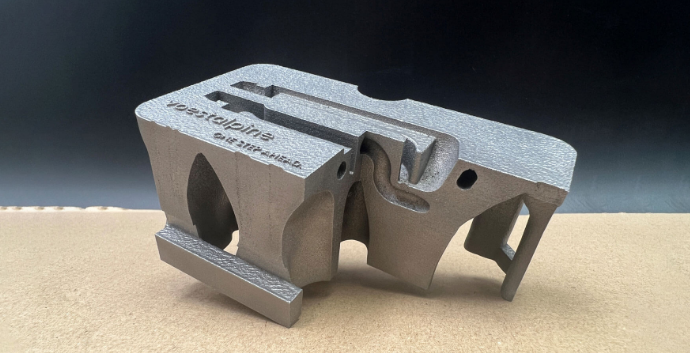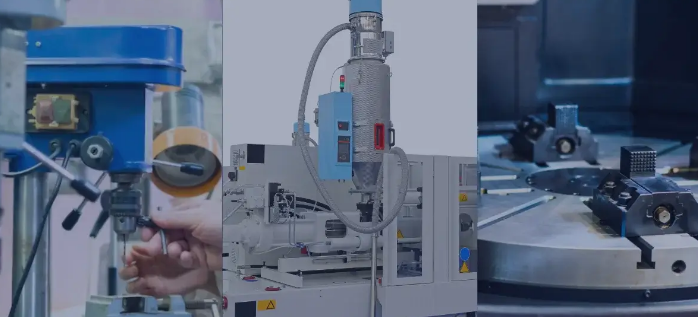The future of metal injection molding (MIM) lies in technological advancements, increased material options, and expanded application fields.
Technological Innovations in Metal Injection Molding
Advanced Materials and Alloys
The advent of advanced materials and alloys in metal injection molding has significantly enhanced product performance. High-performance alloys like Titanium and Inconel are increasingly used, offering superior strength-to-weight ratios. A notable example is Titanium alloy, Ti-6Al-4V, which exhibits a tensile strength of 1000 MPa and a melting point around 1660°C. These materials not only improve the final product quality but also extend the lifespan, often exceeding 20 years under proper conditions.

Breakthroughs in Molding Equipment and Techniques
The latest breakthroughs in molding equipment and techniques have revolutionized the efficiency and precision of metal injection molding. Cutting-edge machines now operate at higher power ratings, often between 30 kW to 50 kW, ensuring faster and more consistent production cycles. The implementation of automation has reduced labor costs by approximately 20%, while increasing production speeds by up to 30%.
One significant advancement is the use of real-time monitoring systems, which have increased the overall product quality by detecting defects early in the production process. This technology, combined with advanced software, has reduced waste by nearly 15%, contributing to both cost-effectiveness and environmental sustainability.
The shift towards smaller, more precise molds allows for the production of complex parts with tolerances as tight as ±0.3%. This precision is essential for industries like micro-electronics and medical device manufacturing. However, it comes at the cost of increased mold complexity and maintenance requirements.
In terms of speed, the latest machines have reduced cycle times to as low as 10 seconds for small components, significantly increasing throughput. However, larger or more complex parts can still take several minutes per cycle.
Metal Injection Molding technology continues to evolve, driven by these innovations in materials and equipment. The sector is poised for substantial growth, with a keen focus on precision, efficiency, and sustainability.
Environmental Impact and Sustainability in Metal Injection Molding
Energy Efficiency Strategies
To address the environmental impact of metal injection molding, various energy efficiency strategies have been implemented. These strategies focus on reducing power consumption, optimizing processes, and using sustainable energy sources.
| Strategy | Description | Impact |
|---|---|---|
| Use of High-Efficiency Machines | Newer molding machines are designed to consume less energy, typically reducing power usage by 20-30% compared to older models. | Reduces overall energy consumption in the production process. |
| Process Optimization | Implementing lean manufacturing principles and optimizing machine settings can lead to 15-25% energy savings. | Enhances production efficiency and reduces waste. |
| Renewable Energy Sources | Integrating solar or wind energy into power supply systems. | Decreases reliance on non-renewable energy sources, cutting CO2 emissions. |
Recycling and Reusing Metal Powders
The recycling and reuse of metal powders in the metal injection molding process are vital for sustainability.
| Aspect | Description | Impact |
|---|---|---|
| Recycling of Metal Powders | Surplus powders from the molding process are recycled, with up to 90-95% efficiency. | Reduces material waste and lowers raw material costs. |
| Quality Maintenance in Recycling | Advanced sorting and sifting techniques ensure recycled powder maintains quality comparable to new materials. | Ensures high-quality final products even with recycled materials. |
| Cost Implications | While initial setup for recycling systems can be costly, long-term savings on materials can reach up to 30%. | Balances initial investment with significant long-term savings. |
Metal injection molding’s future is closely tied to sustainable practices like energy efficiency and recycling. These practices not only reduce environmental impact but also offer economic benefits, aligning with the industry’s move towards greener manufacturing processes.
For more information, visit Metal Injection Molding on Wikipedia.
Market Trends and Economic Forecast for Metal Injection Molding Industry
Global Demand Analysis
The global demand for metal injection molding (MIM) has seen a consistent rise, driven by its adoption in various sectors.
Automotive Sector: MIM technology is increasingly favored for manufacturing complex parts with high precision. The automotive sector, currently accounting for approximately 30% of the MIM market, is expected to grow at a rate of 5% annually. The demand is primarily for components like gears and engine parts, where the precision of MIM offers significant advantages.
Medical Industry: The medical industry’s demand for MIM parts has surged, particularly for surgical tools and orthopedic implants. The sector now constitutes around 20% of the market, with a projected growth rate of 7% per year. The high standards of quality and biocompatibility required in medical devices make MIM an ideal manufacturing choice.
Electronics Industry: In electronics, MIM is used for producing miniaturized, complex components. This sector represents about 15% of the MIM market and is growing due to the ongoing trend towards smaller, more efficient electronic devices.
Emerging Markets and Growth Opportunities
The MIM industry is witnessing significant growth opportunities in emerging markets and new application areas.
Asian Market Expansion: Countries like China and India are rapidly emerging as major hubs for MIM manufacturing, primarily due to lower labor costs and growing local demand. The Asian MIM market is growing at an estimated 10% annually, significantly higher than the global average.
Aerospace Applications: Aerospace is a new frontier for MIM, with parts such as turbine blades and lightweight structural components being in focus. While currently a small percentage of the market, the potential for growth is substantial, given the aerospace industry’s requirements for high-strength, lightweight materials.
Cost Factors: The average cost savings when using MIM over traditional manufacturing methods range from 20% to 50%, depending on the complexity and volume of the parts. This cost-effectiveness, combined with high precision, positions MIM as a preferred choice in emerging markets.
Material Innovations: Continuous advancements in feedstock materials, including the development of high-performance, specialized alloys, are opening up new application areas for MIM. These materials not only improve product performance but also extend the potential market reach of MIM technologies.
Metal Injection Molding technology is shaping the future of manufacturing, with its ability to produce complex shapes efficiently and cost-effectively. The industry’s growth is fueled by expanding global demand and the exploration of new markets and applications.
Integration of Metal Injection Molding with Other Manufacturing Technologies
Synergies with Additive Manufacturing
The integration of Metal Injection Molding (MIM) with additive manufacturing (AM) is creating new possibilities in terms of design flexibility and material efficiency.

Design Flexibility: Combining MIM with AM allows for the production of parts with complex geometries that were previously impossible or too costly to manufacture. This integration is particularly beneficial in sectors like aerospace and medical devices, where customized, intricate designs are often required.
Material Efficiency: Additive manufacturing can reduce material waste significantly, especially in the prototyping phase. Traditional MIM processes can have a material wastage rate of up to 5-10%, whereas AM can reduce this to less than 1%.
Cost Implications: The initial setup cost for integrating AM with MIM can be high, but it leads to long-term savings due to reduced material waste and shortened design-to-production cycles. The break-even point typically occurs when the production volume exceeds a few thousand units.
Automated and Smart Manufacturing Systems
The adoption of automated and smart manufacturing systems in metal injection molding enhances efficiency and precision.
Increased Production Efficiency: Automation in MIM can lead to a 20-30% increase in production efficiency. Automated systems streamline the molding process, reducing cycle times and minimizing human error.
Quality Control: Smart manufacturing systems, equipped with sensors and AI algorithms, can continuously monitor production quality. This real-time monitoring helps in detecting defects early, maintaining a consistent quality standard.
Cost Reduction: While the initial investment in automation and smart systems can be substantial, these technologies eventually lead to cost reductions by optimizing material usage and reducing labor costs. Over a period of 5 years, the cost savings can amount to 15-25% of the total production costs.
Metal Injection Molding is rapidly evolving with these integrations, pushing the boundaries of what’s possible in manufacturing. The collaboration of MIM with other advanced technologies is not only enhancing the capabilities of manufacturing processes but also opening up new markets and opportunities.




